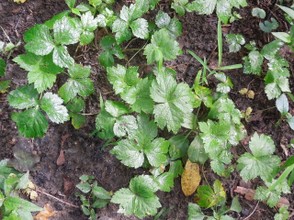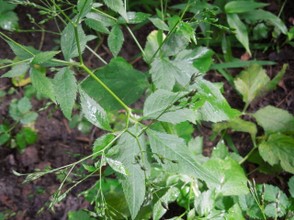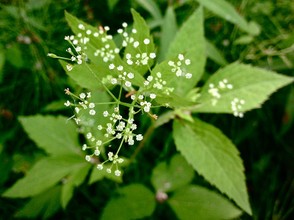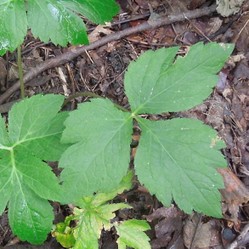Honewort is one of the easiest plants to propagate. It is a prolific seeder and grows readily from seed. The seed begins coming ripe in late August in the Mid-Atlantic region, and is usually completely ripe by mid-September. Seeds are ripe when they have dried completely and the stalks they are on have died. In many cases, scattering the seed in fall is enough to get this plant established. Sow thinly because many plants will sprout, requiring some thinning.
Honewort is also very easy to transplant. It has a taproot, but, like most carrot-family plants, the taproot is sturdy and not easily disturbed. Because it is such a prolific seeder, you will likely find areas in the wild where there is so much of it that you can dig up a few plants without disturbing anything. Transplanted plants readily establish themselves and start growing within a few weeks. If you transplant the plant from deep shade to sun, or vice versa, expect the leaves to die back as the plant grows new leaves adapted to the changed lighting conditions.
First-year plants will typically not grow seed, only leaves, so if you want stalks or seed, you'll need to wait a second year.
Never transplant a native plant from the wild unless it is abundant!!! Also, take care to not leave disturbed soil. The best place to obtain honewort plants are from lawns and parks, on the borders of paths where people mow regularly, and the plants are likely to be killed anyway.











 The Shaming of Femininity and Elevation of Masculinityon 07/13/2017
The Shaming of Femininity and Elevation of Masculinityon 07/13/2017
 What is Genderqueer or Non-Binary Gender?on 10/16/2015
What is Genderqueer or Non-Binary Gender?on 10/16/2015
 Resources for Learning Spanish Free Onlineon 04/13/2016
Resources for Learning Spanish Free Onlineon 04/13/2016
 Ways Native Plants Can Help Control Invasive Plantson 05/26/2016
Ways Native Plants Can Help Control Invasive Plantson 05/26/2016


Questions? Comments? Feedback?